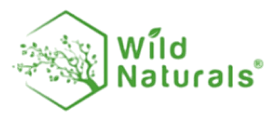

Rosacea is an inflammatory skin condition that affects between 0.5-10% of the world’s population (16 million of those being American), so to say it’s common is a bit of an understatement. This skin disorder used to primarily affect people over the age of 30, but in more recent years, rosacea can be seen as soon as one’s early teens and twenties. If you struggle with unusual redness or sensitivity, it may be rosacea and not just sensitive skin!
The rosy rash that develops on the face as the result of inflammation in the skin is something that affects self-confidence and can also effect the quality of life. It really can be detrimental to your life and the way you choose to have a social life, or deal with stress, anxiety, etc.
So today, I want to teach you how to best treat rosacea naturally so that you can better support your skin’s health from the inside out and perhaps even reverse the symptoms of rosacea using a holistic approach.
How to Treat Rosacea Naturally
95% of people who have rosacea weren’t even aware they had this condition prior to diagnosis. That’s a lot! So, let’s learn about how to better treat it and potentially reverse it using the right tools.
The most common symptoms of rosacea include:
Acne-like breakouts
• Bumpy skin texture
• Dry, rough, scaly skin patches
• Itchy skin
• Large inflamed pores
What is Rosacea?
Rosacea is an inflammatory skin condition that manifests in a red rash on the nose, cheeks, forehead, chin, and even the eyes (known as ocular rosacea) and chest. These legions often include small, red, pus-filled bumps which is why so many mistake rosacea as just a bad case of acne.
Unlike acne, however, rosacea does not produce whiteheads or blackheads. In fact, it rarely appears during adolescent years… though that seems to be changing. Typically, rosacea develops during a person’s thirties and forties beginning with a slight pinkish blush to the skin that progresses into permanent thickening of the skin and redness, especially on the nose area if left untreated.
Women are more likely to develop rosacea than men while men who do develop the condition tend to have more severe cases – sometimes as severe as rhinophyma or a painful disfiguration of the nose.
The Symptoms of Rosacea
Most people think rosacea is just a reddening of the skin and nothing more. However, symptoms often go beyond this.
Painful, inflamed skin
• Raised patches of skin (called plaques)
• Red pimples or welts
• Redness across the nose, cheeks, forehead, and/or chin
• Sensitive eyes including symptoms of dryness, redness, stinging, itchiness, blurred vision, pain, and watery or bloodshot eyes
• Sensitivity to sunlight, hot and cold temperatures, and skincare product ingredients
• Spider veins and/or broken blood vessels on the face
• Stinging or burning sensations of the skin
• Thick areas of the skin that can appear on and around the nose, cheeks, forehead, or chin area
Anything that can cause blood vessels to dilate in the face can also cause a flare-up of symptoms.
Common rosacea triggers include:
Coffee
• Consumption of alcoholic beverages
• Extreme temperatures (hot or cold)
• Fatty foods
• Harsh winds
• Hot drinks
• Spicy foods
• Stress and anxiety
• Sun exposure
Although these triggers will differ from person to person, the key is to single out and eliminate triggers as much as possible to help prevent overt dilation of the blood vessels since each time this happens, they lose some elasticity. This loss of elasticity is what ultimately causes broken blood vessels on the face because they remain in a constant dilated state – hence the redness rosacea is known for.
The symptoms of mild rosacea start out as a small rash, a small patch of bumps, or redness on the skin before spreading and becoming progressively worse. Symptoms can also come and go depending on your emotional state, exposure to triggers, and general lifestyle.
Natural Products for Rosacea
The best natural products to use are those with strong anti-inflammatory properties. These include:
- Chamomile
- Cehami Flower Extract
- Lavender
- Manuka Honey
It’s important to use well-diluted formulas so that you do not further irritate the skin and use very little.
These oils will also help control demodex mites and other microbes thought to aggravate rosacea. Just like with moisturizer, the type of cleanser you're using can affect your rosacea. If you have rosacea, you need to avoid harsh cleansers and astringents, as they can make rosacea much worse. Although rosacea can appear like acne, many acne treatments are irritating for people with rosacea.
Don't use products that contain retinoids or salicylic acid. Follow the same skin care guidelines you do for choosing a moisturizer: Your cleanser should be fragrance-free and hypoallergenic. Be careful about how you use it. (Remember, scrubbing has no place in your rosacea skin-care routine.)
With Wild Naturals gentle skin care line, you can’t go wrong with effectively reducing your rosacea and feeling relief! Visit the online store today to start treating your skin naturally!


